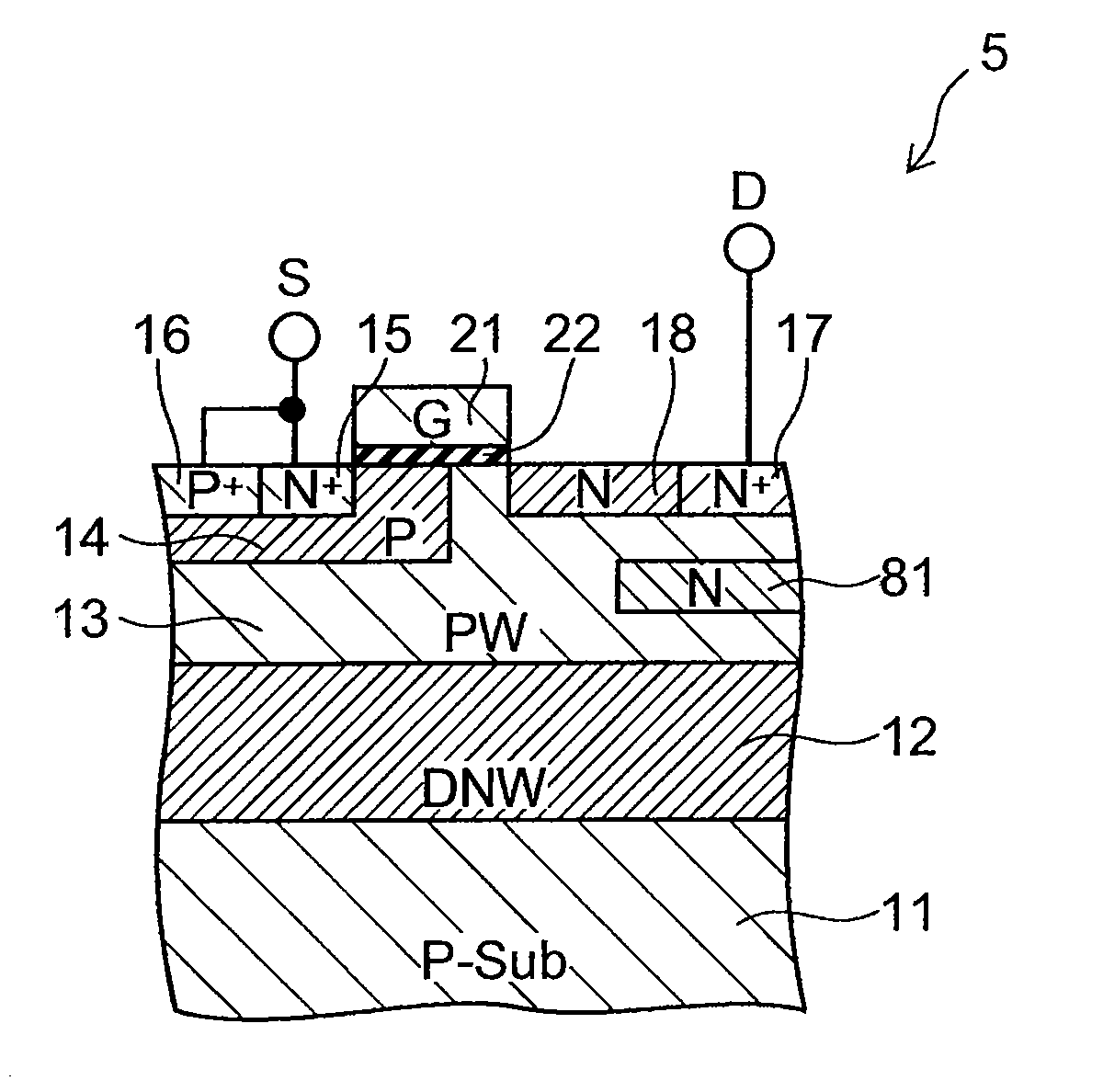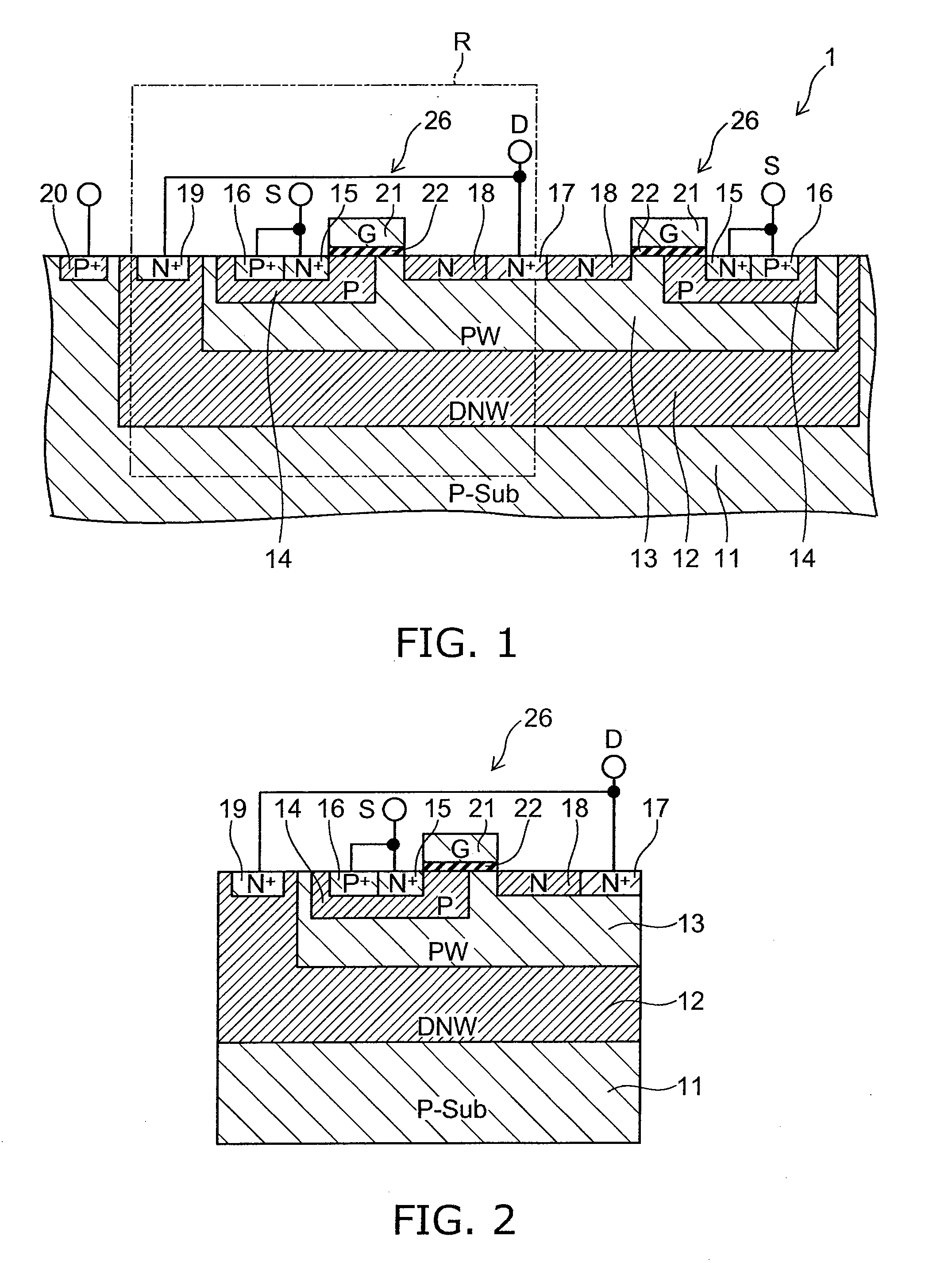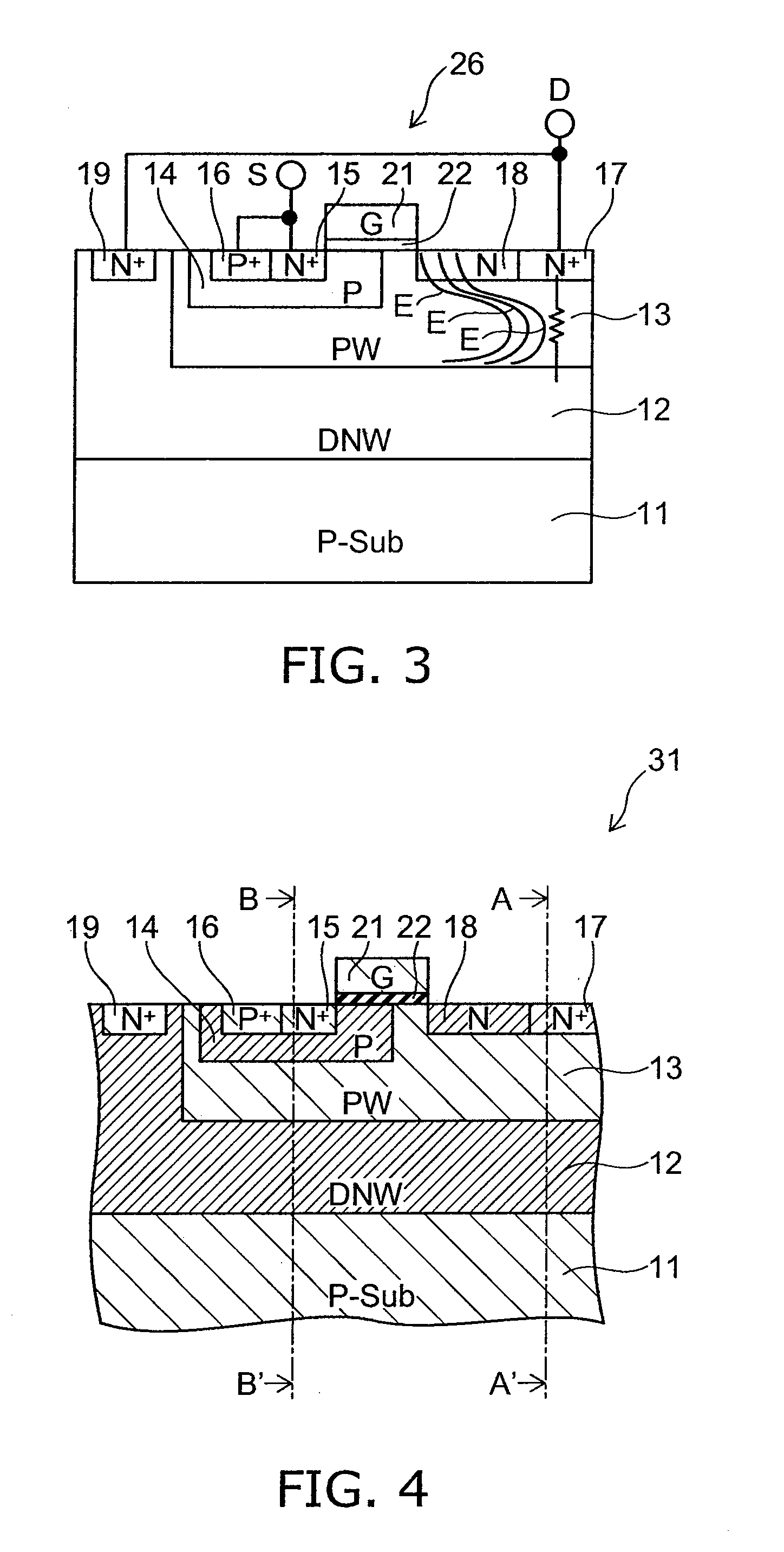Semiconductor device
- Summary
- Abstract
- Description
- Claims
- Application Information
AI Technical Summary
Benefits of technology
Problems solved by technology
Method used
Image
Examples
first embodiment
[0024]First, the present invention will be described.
[0025]FIG. 1 is a cross-sectional view illustrating a semiconductor device according to this embodiment.
[0026]FIG. 2 is an enlarged cross-sectional view illustrating the region R of FIG. 1.
[0027]A P-type substrate 11 having a P-type conductivity is provided in the semiconductor device 1 according to this embodiment as illustrated in FIG. 1 and FIG. 2. The entire P-type substrate 11 may be formed by a uniform semiconductor layer; or only the upper layer portion may be a P-type semiconductor layer. The P-type substrate 11 is referred to as “P-Sub” in FIG. 1 and FIG. 2. A deep N well (DNW) 12 of an N+-type conductivity is formed in a portion of the upper layer portion of the P-type substrate 11. A P well (PW) 13 is selectively formed in a portion of an upper layer portion of the DNW 12. Each of the DNW 12 and the P well 13 is formed by impurity implantation and diffusion. The effective dose amount of the P well 13 is, for example, no...
second embodiment
[0075]the present invention will now be described.
[0076]FIG. 9 is a cross-sectional view illustrating a semiconductor device according to this embodiment. An N-type LDMOS illustrated in FIG. 9 is different than the N-type LDMOS illustrated in FIG. 1.
[0077]In the semiconductor device 2 according to this embodiment, the N-type LDMOS 26 illustrated in FIG. 1 is provided in a region of a portion of the P-type substrate 11, and an N-type LDMOS 46 illustrated in FIG. 9 is provided in a region in another portion of the P-type substrate 11. The N-type LDMOS 26 forms a high-side transistor of a DC-DC converter, and the N-type LDMOS 46 forms a low-side transistor of the DC-DC converter.
[0078]As illustrated in FIG. 9, in the N-type LDMOS 46, the contact layer 19 (of FIG. 1) is not provided to apply the drain potential to the DNW 12. The DNW 12 illustrated in FIG. 9 continues from the DNW 12 illustrated in FIG. 1. And the drain potential of the N-type LDMOS 26 is applied to the DNW 12. Otherwis...
third embodiment
[0087]the present invention will be described.
[0088]FIG. 11 is a cross-sectional view illustrating a semiconductor device according to this embodiment.
[0089]As illustrated in FIG. 11, a semiconductor device 3 according to this embodiment includes, in addition to the configuration of the semiconductor device 1 (of FIG. 1 and FIG. 2) according to the first embodiment described above, a P well 63. The P well 63 is formed in a portion in a region of the P well 13 directly below the channel implantation region 14. And the P well 63 contacts the channel implantation region 14. The P well 63 has the P-type conductivity. The effective impurity concentration of the P well 63 is higher than the effective impurity concentration of the P well 13.
[0090]According to this embodiment, the P well 63 is additionally formed in the P well 13, thereby reinforcing the effective acceptor concentration in the region of the P well 13 on the source side. Defects such as latch up can thereby be avoided more r...
PUM
 Login to View More
Login to View More Abstract
Description
Claims
Application Information
 Login to View More
Login to View More - R&D Engineer
- R&D Manager
- IP Professional
- Industry Leading Data Capabilities
- Powerful AI technology
- Patent DNA Extraction
Browse by: Latest US Patents, China's latest patents, Technical Efficacy Thesaurus, Application Domain, Technology Topic, Popular Technical Reports.
© 2024 PatSnap. All rights reserved.Legal|Privacy policy|Modern Slavery Act Transparency Statement|Sitemap|About US| Contact US: help@patsnap.com










